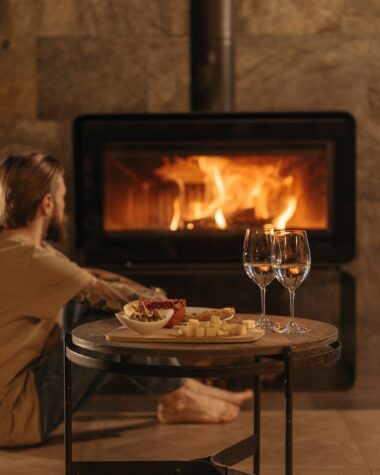Driving a screw into wood is one of those tasks which are often underestimated. Sure, it seems simple enough. After all, what can possibly go wrong with screwing a piece of wood?
Well, you can end up failing to draw the boards together properly. And if the screw is not tight enough, your DIY project will be easily prone to damage. Nonetheless, splitting wood while screwing into it is also common spread.
So how to screw into the wood? What are the Dos and Don’ts? And how about the tiny tricks which will help you avoid unpleasant mistakes? Read on and find out.
What You Will Need To Follow This Tutorial
- Electric drill
- Pencil/Marker
- Screws
- Drill bit
- Screwdriver Bit
Pro Tips
1 – Use a bar of soap to increase proper friction when working with hardwood
For example, if you are working with maple or walnut, or any other hardwood, you may have a hard time driving the screw into the wood. Just wipe a bar of soap or a wax candle along the screw. Doing so will help to lubricate the threads.
2 – Don’t skip on drilling a pilot hole
When screwing into wood, it’s crucial that the thread will grip well. Thus, you always want to start with drilling a pilot hole (even if you are feeling lazy enough to skip on this seemingly useless move). If you aim to connect 2 pieces of wood, you need to pre-drill a hole which is 0.5 – 1 mm bigger than the diameter of the screw.
3 – Set your equipment right
If you work at the wrong speed, you may end up disappointed. Higher speed than needed may lead to burning marks due to overheating. Lower speed than needed may lead to an untidy hole.
Always drill along the grain of the wood. Fix the wood boards with clamps to stay away from accidental slips during the process of drilling. Don’t forget to check twice if the bit you are using fits the screw precisely.
Step by Step Instructions for Screwing Into Wood
Step 1 – Drill a pilot hole

Image Courtesy of popularwoodworking.com
For a start, you need to position the board. Place the board next to the other board or the stud you are about to screw it into. Use a marker or a pencil to mark the exact spot of the screw before you drill. Next, use a drill bit which has the same diameter as the screw and drills a pilot hole.
Step 2 – Finish with a screwdriver bit

Image Credit: videoblocks.com
Replace the drill bit with a screwdriver’s bit. Set the chuck of the drill at the most suitable number of the setups you have available (typically the intermediate work best). Proceed with placing the very point of the screw to seat it tight. Your wisest move is to spin the screw a few times by hand until you can see it fits the pilot hole well.
Now, it’s time to position the screwdriver bit tightly as to match perfectly the head of the screw. Press the drill firmly and steadily. Sometimes, the clutch may be released before the screw is fully intact into the wood. In such cases, you will need to adjust the drill’s clutch by switching to a higher setting.
Ultimately, anyone can learn how to screw into wood. That includes complete beginners who are just starting to explore the beauty and joy of woodworking. However, it is up to your determination and precision to understand the process of screwing into the wood; this process is far more significant than what it appears to be at the very first sight.
If you also believe in the need for useful tutorials with a focus on practical and easy tips, you can support us by liking and sharing this article. Drop us a line to share your experience, questions, or extra hacks with the DIY community!








